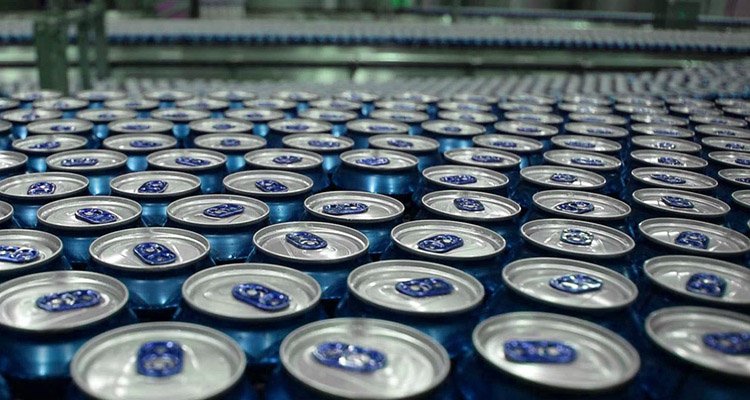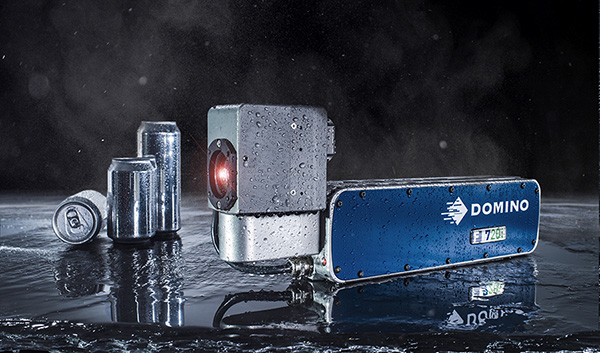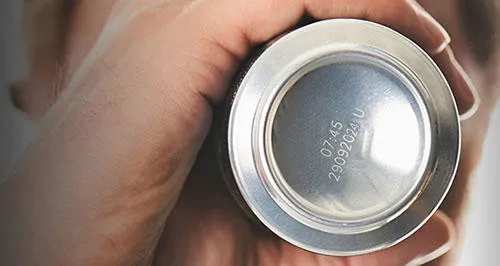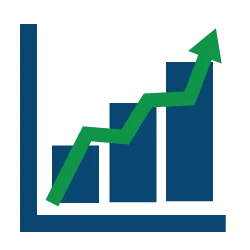Across the entire world, the Beverage sector has been growing at a fast rate and demand for aluminum cans is at an all-time high. In fact, during the Pandemic, there was a massive aluminum shortage due to the rise in canned beverage consumption - both in soft drinks and within the alcoholic beverage industry.
Meeting that consumer demand requires coding equipment that is fast, effective, efficient - and ultimately, can stand up to the actual conditions of a beverage factory environment. What exactly does that mean? It means that your factory's codes have to stand up to dust, condensation, temperature change and, the high volume of aluminum cans that are pumped through the average Beverage Factory every single day.
Fiber Laser technology aims to satisfy these increasing requirements. How do we plan to do that? Find out here.
What happened in the Beverage Sector?
It seems that all over the world, consumers are thirsty - and this phenomenon isn't just related to the Pandemic. Research as far back as 2018 reveals that the canned soft drink industry was already in the midst of explosive growth all over the world, mirroring the worldwide trend of increased demand for canned beverages.
Then 2020 happened. With everyone stuck at home and unable to go out to their favorite bar or watering hole, and the desire for the delicious nectar of the beverage gods the same as usual, there was a crush on the supply chain for canned beverages, leading to unprecedented aluminum shortages all over the world. The Pandemic's built-in shortages just exacerbated built-in issues that were simmering for the both the soft drink and beer industry.
Where did coding factor into these shortages?
If you're in the Beverage industry you'll be able to testify that the laws didn't stop applying just because the world was effectively paused in March of 2020. Instead, proper tracking and tracing became all the more important as companies had the time to take a close look at their operations and look for potential areas of waste.
Meanwhile, as this scarcity was occurring, those soda and beer cans still had to get coded with the proper date codes and still had to remain compliant with local and federal laws - all while beverage factories couldn't afford to lose production thanks to increased demand and the rising production cost of the aluminum.
Carbonated soft drinks remains the largest sector for beverage cans in the UK - and grew by 5% in 2018. Meanwhile, the rapidly expanding craft beer sector (consumer spending in the category is at a record high and up 47% in the year up to June 2018) is also fueling growth, with canned craft beer sales up 66% in the first half of 2018.

What technology is the best for coding onto cans?
Here's the million dollar, no, multi-million dollar question: exactly which technology should you choose for your factory? If you were starting from scratch or revamping, after say, some unforeseen global calamity not seen in over a century (how often does that occur, right?!)
Traditionally tried and true coding and marking methods like continuous inkjet has been the go-to technology for coding aluminum cans. It’s fast, flexible and it gets the job done.
But recently fiber Laser technology has come into vogue as an innovative, and frankly, less wasteful and more reliable way to handle the real-world demands facing beverage manufacturers in both the soft drink and beer industries.
So what exactly makes fiber laser technology a viable solution?
High productivity - both now and in the future
We don't have to tell you that on the production line, time is money. With demand for aluminum cans growing by the month, it’s essential that your company's coding operations are just as, if not more efficient than your production lines if you want to avoid lost revenue from wasted product.
Long story short: quicker coding can potentially lead to higher profits.
Want to know about the science behind the speed? Unlike conventional fiber lasers, the 3D power concentration of the F720i Fiber Laser generates a highly-focused beam. This beam is distributed in short intense pulses, resulting in increased marking speed.
Plus, thanks to the high ingress protection rating, the F720i (IP65) is designed to withstand the humid, sugar-laden production environment of beverage canning. It all adds up to favorable TCO, despite the fact that fiber laser technology incurs a higher upfront cost compared to most alternative ink-based technologies.
>> 5 key considerations when installing coding technology

Clear and high-quality codes
Of course, speed is nothing if your codes are illegible. In fact, in a Beverage factory, that can be the number one problem with tried and true methods like continuous inkjet. Condensation can lead to runny ink and runny ink leads to unreadable codes and wasted scrapped product.
With fiber laser marking, that’s never an issue; the code is etched into the aluminum, and the process is done. No amount of condensation is going to affect a laser etching.
Plus, the F-Series laser's beam is about ten times finer than other laser marking and coding technologies, making it capable of clear and permanent codes - even when you are coding onto challenging surfaces such as the concave base of a soda or beer can.
This level of precision has several of benefits beyond the coding process itself. Firstly, you remain competitive with the legislative demands for clear, legible and long-lasting characters. Secondly it can assist cameras in improved reading codes for traceability and verification purposes. Finally, it’s possible to create intricate and detailed promotional codes quickly and efficiently, creating ultimate flexibility for your product marketers.

How can you budget for the F-Series?
As with any new capital business equipment purchase, the acquisition of new coding technology has to make sense from a budgetary viewpoint. Fiber laser has a number of advantages that make it efficient in terms of total cost of ownership (TCO) compared to traditional inkjet-based printing technologies.
While that tech is a wonderful offering for the likes of beer and soda bottle printing, there are some variables that make inkjet more susceptible to waste than laser for can coding.
The biggest difference is that once a laser is fully installed, it’s in - that's it - no fuss, no muss. No manual interventions such as ink changes or adjustment to a print head are needed - and the meantime between failure for fiber laser has been known to be in excess of 100,000 hours. It just runs and runs - and then runs some more, reducing downtime caused by coding.

What are the environmental considerations of a Laser?
Now with Millennials starting their own families and making their own purchasing decisions, sustainability is now past the point of niche and more of a necessity for all types of businesses. Large beverage companies have long been at the forefront of aluminum and plastic recycling as well as water conservation efforts.
Why wouldn't your coding and marking technology be any different?
Using cans as your beverage packaging of choice can already be an important step in better managing your site’s environmental impact. Cans have a long sustainability record - with 72% of all aluminum cans getting recycled in the UK.
In fact, it’s possible for a can to make the journey from recycling center and back to the supermarket shelf as another product in as little as eight weeks. Opting for fiber laser technology is another step towards improving your environmental program. It’s energy efficient and removes the use of solvents, inks and other consumables from your site.

Want to know more?
Making the move to fiber laser marking machines can be a catalyst to improved speed, clarity and efficiency for your can coding operations. Choosing a high-end technology like the F720i laser ensures you are working as efficiently as possible and are well-positioned to cope with the global increasing demand for cans.
If you would like to know more about the F720i or to discuss finance options, get in touch with the Domino North America team.
You may also be interested in:
>>How to keep your staff safe when coding with industrial laser markers